Related Research Articles

Clipperton Island is an uninhabited 6 km2 (2.3 sq mi) coral atoll in the eastern Pacific Ocean. It is 10,677 km (6,634 mi) from Paris, France, 5,400 km (2,900 nmi) from Papeete, Tahiti, and 1,080 km (580 nmi) from Mexico. It is an overseas state private property of France, under direct authority of the Minister of the Overseas. In the past, Clipperton Island was the subject of a sovereignty dispute in particular between France and Mexico, which was finally settled through arbitration in 1931; the Clipperton Island Case remains widely studied in international law textbooks.
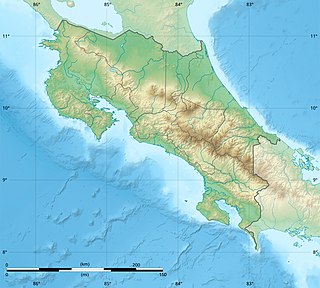
Costa Rica is located on the Central American Isthmus, surrounding the point 10° north of the equator and 84° west of the prime meridian. It has 212 km of Caribbean Sea coastline and 1,016 on the North Pacific Ocean.

Cocos Island is an island in the Pacific Ocean administered by Costa Rica, approximately 550 km southwest of the Costa Rican mainland. It constitutes the 11th of the 13 districts of Puntarenas Canton of the Province of Puntarenas. With an area of approximately 23.85 km2 (9.21 sq mi), the island is more or less rectangular in shape. It is the southernmost point on the North American continent if outer islands are included.

The Cocos Plate is a young oceanic tectonic plate beneath the Pacific Ocean off the west coast of Central America, named for Cocos Island, which rides upon it. The Cocos Plate was created approximately 23 million years ago when the Farallon Plate broke into two pieces, which also created the Nazca Plate. The Cocos Plate also broke into two pieces, creating the small Rivera Plate. The Cocos Plate is bounded by several different plates. To the northeast it is bounded by the North American Plate and the Caribbean Plate. To the west it is bounded by the Pacific Plate and to the south by the Nazca Plate.

The black noddy or white-capped noddy is a seabird from the family Laridae. It is a medium-sized species of tern with black plumage and a white cap. It closely resembles the lesser noddy with which it was at one time considered conspecific. The black noddy has slightly darker plumage and dark rather than pale lores.

Malpelo is a small island in the eastern Pacific Ocean, located about 500 km (310 mi) west of the Colombian mainland with a military post manned by the Colombian Armed Forces. It consists of a sheer and barren rock with three high peaks, the highest being Cerro de la Mona with a height of 300 m (980 ft). The island is about 1.5 kilometres in length from northeast to southwest, and 640 metres in width.
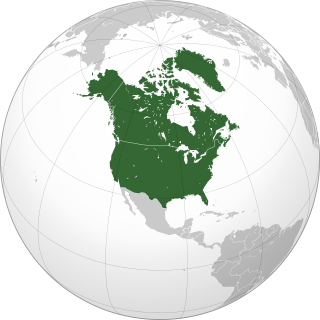
Northern America is the northernmost subregion of North America. The boundaries may be drawn slightly differently. In one definition, it lies directly north of Middle America. Northern America's land frontier with the rest of North America then coincides with the Mexico–United States border. Geopolitically, according to the United Nations' scheme of geographic regions and subregions, Northern America consists of Bermuda, Canada, Greenland, Saint Pierre and Miquelon, and the United States.
The World Geographical Scheme for Recording Plant Distributions (WGSRPD) is a biogeographical system developed by the international Biodiversity Information Standards (TDWG) organization, formerly the International Working Group on Taxonomic Databases. The WGSRPD standards, like other standards for data fields in botanical databases, were developed to promote "the wider and more effective dissemination of information about the world's heritage of biological organisms for the benefit of the world at large". The system provides clear definitions and codes for recording plant distributions at four scales or levels, from "botanical continents" down to parts of large countries. Current users of the system include the International Union for Conservation of Nature (IUCN), the Germplasm Resources Information Network (GRIN), and the World Checklist of Selected Plant Families (WCSP).
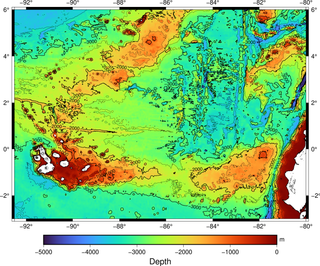
The Galápagos hotspot is a volcanic hotspot in the East Pacific Ocean responsible for the creation of the Galápagos Islands as well as three major aseismic ridge systems, Carnegie, Cocos and Malpelo which are on two tectonic plates. The hotspot is located near the Equator on the Nazca Plate not far from the divergent plate boundary with the Cocos Plate. The tectonic setting of the hotspot is complicated by the Galapagos Triple Junction of the Nazca and Cocos plates with the Pacific Plate. The movement of the plates over the hotspot is determined not solely by the spreading along the ridge but also by the relative motion between the Pacific Plate and the Cocos and Nazca Plates.
The Central America bioregion is a biogeographic region comprising southern Mexico and Central America.

Johngarthia is a genus of crabs in the land crab family Gecarcinidae, formerly included in the genus Gecarcinus, and containing these species:
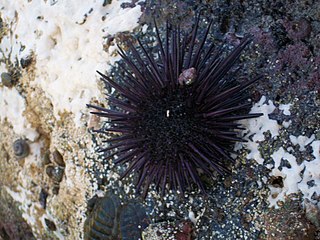
The sea urchins of the Gulf of California live between the coasts of the Baja California Peninsula to the west and mainland state of Sonora, Mexico to the east. The northern boundary is the lateral band of land with the remains of the Colorado River Delta, and the southern is the Pacific Ocean.
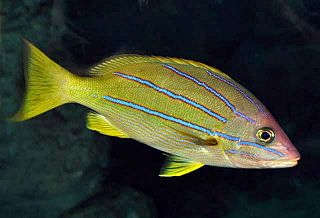
The blue-and-gold snapper is a species of marine ray-finned fish, a snapper belonging to the family Lutjanidae. It is native to the eastern Pacific Ocean where it is important to local subsistence fisheries.

Stegastes arcifrons, the island major or Galapagos gregory, is a damselfish of the family Pomacentridae native to the eastern Pacific Ocean. Its range extendins from Costa Rica to the Cocos Islands, Malpelo Island, and the Galapagos Islands. It is found on rocky and coral reefs at depths ranging from 1 to 20 m. It is common in many parts of its range, and its population appears to be stable. No particular threats have been identified, and the IUCN rates it as being of "Least Concern".
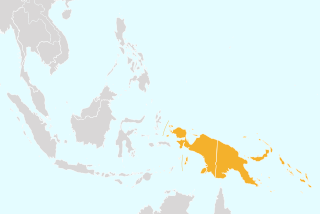
Papuasia is a Level 2 botanical region defined in the World Geographical Scheme for Recording Plant Distributions (WGSRPD). It lies in the southwestern Pacific Ocean, in the Melanesia ecoregion of Oceania and Tropical Asia.

The Malpelo Plate is a small tectonic plate (microplate) located off the coasts west of Ecuador and Colombia. It is the 57th plate to be identified. It is named after Malpelo Island, the only emerged part of the plate. It is bounded on the west by the Cocos Plate, on the south by the Nazca Plate, on the east by the North Andes Plate, and on the north by the Coiba Plate, separated by the Coiba Transform Fault (CTF). This microplate was previously assumed to be part of the Nazca Plate. The Malpelo Plate borders three major faults of Pacific Colombia, the north to south striking Bahía Solano Fault in the north and the Naya-Micay and Remolino-El Charco Faults in the south.

The Coiba Plate is a small tectonic plate (microplate) located off the coasts south of Panama and northwestern Colombia. It is named after Coiba, the largest island of Central America, just north of the plate offshore southern Panama. It is bounded on the west by the Cocos Plate, on the south by the Malpelo Plate, on the east by the North Andes Plate, and on the north by the Panama Plate. This microplate was previously assumed to be part of the Nazca Plate, forming the northeastern tongue of the Nazca Plate together with the Malpelo Plate. Bordering the Coiba Plate on the east are the north-south striking Bahía Solano Fault and east of that, the Serranía de Baudó, an isolated mountain chain in northwestern Chocó, Colombia.

Malacanthus brevirostris, the quakerfish, flagtail blanquillo, false whiting or stripetail tilefish, is a species of marine ray-finned fish, a tilefish belonging to the family Malacanthidae. It has a wide Indo-Pacific distribution.

Central America is a region containing seven countries that connects the two continents of North America and South America.
References
- ↑ Brummitt, R.K. (2001), World Geographical Scheme for Recording Plant Distributions: Edition 2 (PDF), International Working Group on Taxonomic Databases For Plant Sciences (TDWG), archived from the original (PDF) on 2016-01-25, retrieved 2018-01-17
- ↑ "Eastern Pacific Ocean, southeast of Mexico", Terrestrial Ecoregions, World Wildlife Fund, retrieved 2018-01-17
- ↑ Hogue, C.; Miller, S. (1981), "Entomofauna of Cocos Island, Costa Rica", Atoll Research Bulletin, 250: 1–29
- ↑ Schneider, P., "Malpelo Island the "Mount Everest" of shark and large pelagic diving", Advanced Diver Magazine Digital, retrieved 2018-01-17